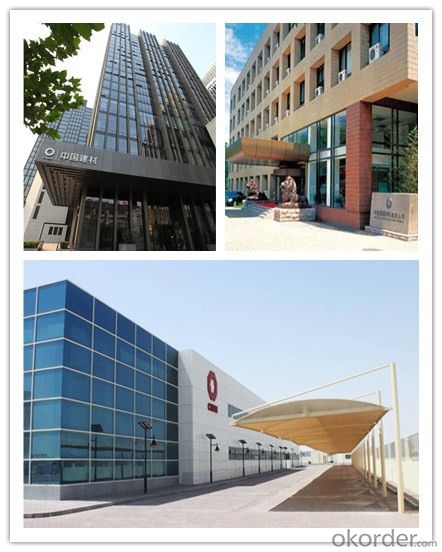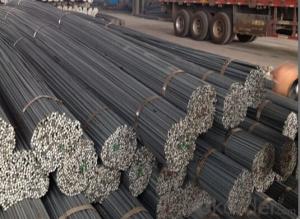ASTM A615 Gr 60 8mm 10mm 12mm High Quality Steel Rebar
- Loading Port:
- Tianjin
- Payment Terms:
- TT OR LC
- Min Order Qty:
- 100 m.t.
- Supply Capability:
- 10000 m.t./month
OKorder Service Pledge
Quality Product, Order Online Tracking, Timely Delivery
OKorder Financial Service
Credit Rating, Credit Services, Credit Purchasing
You Might Also Like
Item specifice
Standard:
AISI,ASTM,JIS,GB,BS,DIN,API,EN
Technique:
Hot Rolled,Cold Rolled,Cold Drawn,ERW,Forged,Saw,Extruded,EFW,Spring
Shape:
U Channel,Square,C Channel,Hexagonal,Round,Rectangular,Oval,LTZ
Surface Treatment:
Galvanized,Coated,Copper Coated,Color Coated,Oiled,Dry,Chromed Passivation,Polished,Bright,Black,PVDF Coated
Steel Grade:
Q195,Q215,Q235,Q215B,Q235B,RHB335,HRB400,200 Series,300 Series,400 Series,600 Series,SS400-SS490,10#,20#,A53(A,B)
Certification:
ISO,SGS,BV,IBR,RoHS,CE,API,BSI,UL
Thickness:
6-34mm
Width:
6-34mm
Length:
12m
Outer Diameter:
6-34mm
Net Weight:
10kg
Packaging:
seaworthy packaging
ASTM A615 Gr 60 8mm 10mm 12mm High Quality Steel Rebar
Details of the ASTM A615 Gr 60 8mm 10mm 12mm High Quality Steel Rebar
| Standard & Grade: | GB1499-98 : HRB335,HRB400,HRB500 |
| BS4449-1997 : GR460,GR500 | |
| CAN/CSA-G30.18-M92 : 400W | |
| ASTM A615 : Gr.40, Gr.60 | |
| Diameter: | 6mm;8mm;10mm;12mm;14mm;16mm;18mm;20mm;22mm;25mm;28mm;30mm;32mm;35mm;40mm |
| Length: | 6m,9m,12m |
| Packing: | Bundle packing |
| Origin: | China |
| Application: | Construction,Road,Machinery processing,Welding fields. |
| Delivery time: | 10-25 days |
| Shipment: | By bulk vessel or Container |
| Documents: | Mill Test Certificate,Commercial Invoice,Packing List,Certificate of Origin |
Company Introduction of the ASTM A615 Gr 60 8mm 10mm 12mm High Quality Steel Rebar
CNBM International Corporation is the most import and export platform of CNBM group(China National Building Material Group Corporation) ,which is a state-owned enterprise, ranked in 270th of Fortune Global 500 in 2015.
With its advantages, CNBM International are mainly concentrate on Cement, Glass, Iron and Steel, Ceramics industries and devotes herself for supplying high quality series of refractories as well as technical consultancies and logistics solution.


Packaging & Delivery of the ASTM A615 Gr 60 8mm 10mm 12mm High Quality Steel Rebar
| Packaging Detail | Sea worthy packing /as per customer's packing instruction |
| Delivery Detail | 15 ~ 40 days after receiving the deposit |
FAQ
| Are you a trading company or manufacturer? | Manufacturer |
| What’s the MOQ? | 1000m2 |
| What’s your delivery time? | 15-20 days after downpayment received |
| Do you Accept OEM service? | Yes |
| what’s your delivery terms? | FOB/CFR/CIF |
| What's the Payment Terms? | 30% as deposit,70% before shipment by T/T |
| Western Union acceptable for small amount. | |
| L/C acceptable for large amount. | |
| Scrow ,Paybal,Alipay are also ok | |
| Why choose us? | Chose happens because of quality, then price, We can give you both. Additionally, we can also offer professional products inquiry, products knowledge train (for agents), smooth goods delivery, excellent customer solution proposals. |
| What's your available port of Shipment? | Main Port, China |
| What’s your featured services? | Our service formula: good quality+ good price+ good service=customer's trust |
| Where are your Market? | Covering more than 160 countries in the world |
- Q:Are there any standards for the spacing of steel rebars in concrete?
- Steel rebars in concrete have specific spacing standards in place to guarantee the durability and structural integrity of the reinforced concrete. These standards may vary depending on factors such as the type of structure, load conditions, and local building codes. In the United States, the American Concrete Institute (ACI) provides guidelines for rebar spacing in their publication ACI 318, known as "Building Code Requirements for Structural Concrete." According to ACI 318, the minimum spacing between parallel reinforcing bars should be equal to or greater than the maximum bar size or 1.5 times the diameter of the largest coarse aggregate used in the concrete, whichever is larger. For instance, if the maximum bar size is 12mm and the largest coarse aggregate size is 20mm, the minimum spacing between the rebars should be 30mm (1.5 times the largest aggregate size). This ensures sufficient concrete cover around each rebar, protecting it from corrosion and providing adequate bond strength. In addition to the minimum spacing, ACI 318 also offers guidelines for the maximum spacing of rebars. These guidelines take into account factors such as the size and shape of the concrete member, the type of loading it will experience, and the required strength. The maximum spacing is typically determined to prevent excessive cracking and ensure proper distribution of loads throughout the structure. It is important to note that local building codes and regulations may have additional requirements or deviations from the ACI standards. Therefore, it is always recommended to consult the relevant building codes or work with a qualified structural engineer to ensure compliance with the specific spacing requirements for steel rebars in concrete in your area.
- Q:What are the common types of steel rebars used in residential construction?
- The common types of steel rebars used in residential construction are typically plain round bars (Grade 40 or Grade 60) and deformed bars (Grade 40 or Grade 60).
- Q:Can steel rebars be used in the construction of pedestrian bridges and walkways?
- Yes, steel rebars can be used in the construction of pedestrian bridges and walkways. Steel rebars provide strength and durability, making them an ideal choice for reinforcing concrete structures like bridges and walkways.
- Q:How do steel rebars prevent cracks in concrete?
- The reinforcement provided by steel rebars is essential for preventing cracks in concrete. These rebars increase the tensile strength of the concrete, which is weak in tension. While concrete can withstand compressive forces, it is susceptible to cracking when subjected to tension or pulling forces. When steel rebars are embedded in concrete, they function as a framework or skeleton that distributes the tensile forces evenly throughout the structure. As a result, the rebars absorb the tension, effectively preventing the concrete from cracking or failing under the applied load. In addition to absorbing tension, the rebars also control the size and width of any cracks that may occur. By confining the cracks to a limited area surrounding the rebars, they prevent the cracks from spreading throughout the entire concrete structure. Furthermore, the presence of rebars can even help prevent cracks from forming in the first place, as they reinforce the concrete and improve its overall durability. To summarize, steel rebars play a critical role in preventing cracks in concrete by increasing its tensile strength, absorbing tension, and controlling crack propagation. This reinforcement is vital in ensuring the structural integrity and longevity of concrete structures, effectively preventing potential failures and ensuring their safety.
- Q:Can steel rebars be used in retaining wall construction?
- Yes, steel rebars can be used in retaining wall construction. Steel rebars are commonly used to reinforce concrete structures, including retaining walls, to enhance their strength and durability. The rebars provide additional tensile strength to the concrete, helping the retaining wall resist lateral pressure from soil or water and maintain its structural integrity.
- Q:Can steel rebars be used in wind turbine tower construction?
- Steel rebars are indeed utilized in the construction of wind turbine towers. In the construction industry, steel rebars are frequently employed to reinforce concrete structures. Wind turbine towers typically consist of reinforced concrete for both the foundation and the tower structure. By integrating steel rebars, the concrete's strength and durability are enhanced, enabling it to withstand the wind turbine's exerted loads and forces. The rebars effectively reinforce the concrete, ensuring the even distribution of loads throughout the tower structure, thereby guaranteeing its stability and structural integrity. Consequently, steel rebars hold significant importance in wind turbine tower construction and are commonly employed in this particular application.
- Q:Can steel rebars be used in corrosive chemical environments?
- When steel rebars are used in corrosive chemical environments, their performance and durability may be compromised. Certain chemicals, especially acidic ones or those containing chlorides, can cause corrosion in steel. This corrosion can lead to structural damage and a decrease in load-bearing capacity. To reduce the risk of corrosion, there are several measures that can be taken. One common approach is to apply a protective coating, such as epoxy or zinc, onto the rebars. This creates a barrier between the steel and the corrosive environment. Another option is to use stainless steel rebars or other corrosion-resistant alloys, which offer better resistance against chemical corrosion. To determine the best course of action, it is essential to consider the specific chemicals present in the environment. Consulting with corrosion engineers and experts is recommended. Regular maintenance and inspections are also necessary to promptly identify any signs of corrosion and take corrective action. This ensures the reinforced concrete structures remain structurally sound and safe.
- Q:How do steel rebars contribute to the overall sustainability of the construction industry?
- Steel rebars contribute to the overall sustainability of the construction industry in several ways. Firstly, steel rebars are made from recycled materials, reducing the demand for new resources and minimizing the environmental impact of steel production. Additionally, steel rebars are highly durable and have a long lifespan, ensuring the longevity and stability of structures, reducing the need for frequent repairs or replacements. Moreover, the use of steel rebars in reinforced concrete allows for the construction of taller and more complex structures, maximizing the efficient use of land and reducing the need for additional construction projects. Overall, steel rebars play a crucial role in improving the sustainability of the construction industry by promoting resource conservation, durability, and efficient construction practices.
- Q:Can steel rebars be used in structures with limited accessibility?
- Indeed, structures with limited accessibility can utilize steel rebars. These rebars are frequently employed in reinforced concrete structures for their ability to enhance strength and durability. They possess versatility, enabling effortless transportation and installation, even in regions with restricted access. Under such circumstances, steel rebars can be conveniently cut, bent, and assembled on-site to precisely accommodate the structure's specific requirements. Furthermore, steel rebars can be prefabricated off-site and subsequently transported to the construction site, facilitating simpler handling and installation in areas with restricted entry. Consequently, steel rebars emerge as a fitting choice for structures located in remote areas or regions with limited available space.
- Q:What are the standard sizes for steel rebars?
- Steel rebars come in various standard sizes, which depend on both the country and industry standards. However, there are some commonly used sizes for steel rebars, such as #3, #4, #5, #6, #7, #8, #9, #10, #11, #14, and #18. These numbers correspond to the diameter of the rebar in inches. For instance, a #3 rebar has a diameter of 3/8 inch, while a #18 rebar has a diameter of 2 1/4 inches. It is worth noting that different countries may employ their own unique sizing systems. Therefore, it is always essential to refer to the local building codes and standards to obtain accurate information regarding steel rebar sizes.
1. Manufacturer Overview |
|
|---|---|
| Location | |
| Year Established | |
| Annual Output Value | |
| Main Markets | |
| Company Certifications | |
2. Manufacturer Certificates |
|
|---|---|
| a) Certification Name | |
| Range | |
| Reference | |
| Validity Period | |
3. Manufacturer Capability |
|
|---|---|
| a)Trade Capacity | |
| Nearest Port | |
| Export Percentage | |
| No.of Employees in Trade Department | |
| Language Spoken: | |
| b)Factory Information | |
| Factory Size: | |
| No. of Production Lines | |
| Contract Manufacturing | |
| Product Price Range | |
Send your message to us
ASTM A615 Gr 60 8mm 10mm 12mm High Quality Steel Rebar
- Loading Port:
- Tianjin
- Payment Terms:
- TT OR LC
- Min Order Qty:
- 100 m.t.
- Supply Capability:
- 10000 m.t./month
OKorder Service Pledge
Quality Product, Order Online Tracking, Timely Delivery
OKorder Financial Service
Credit Rating, Credit Services, Credit Purchasing
Similar products
New products
Hot products
Related keywords































